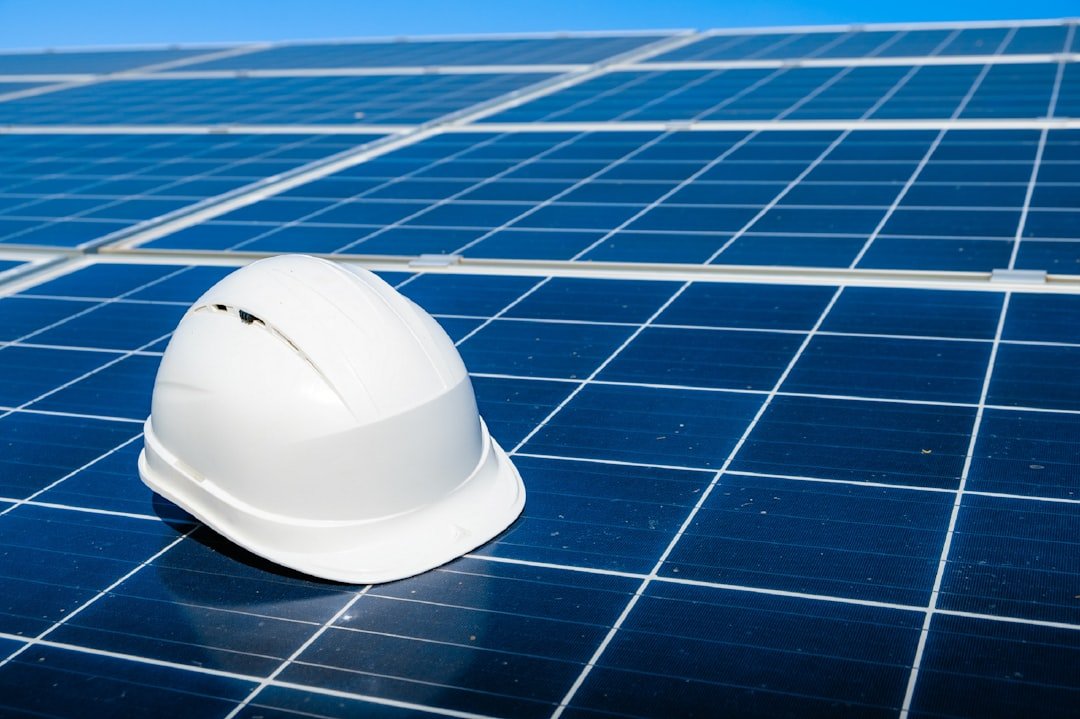The search for sustainable energy solutions is more important than ever as the globe struggles with the urgent issues of climate change and environmental degradation. As you may have observed, conventional fossil fuels, which have traditionally been the main source of energy produced worldwide, are coming under more and more scrutiny due to their negative effects on the environment. A wide range of carbon-free energy options have therefore surfaced, each with its own advantages and disadvantages. These substitutes offer the potential to lower greenhouse gas emissions while also opening the door to a more resilient and sustainable energy future.
Key Takeaways
- Carbon-free energy solutions are crucial for combating climate change and reducing greenhouse gas emissions.
- Solar energy is a renewable and abundant source of power that can be harnessed using photovoltaic cells or solar thermal systems.
- Wind energy is a clean and sustainable source of power that is generated by harnessing the kinetic energy of the wind using wind turbines.
- Hydroelectric power is generated by harnessing the energy of flowing water to produce electricity, and it is a reliable and renewable energy source.
- Geothermal energy utilizes the heat from the Earth’s core to generate electricity and heat buildings, providing a consistent and sustainable energy source.
- Biomass energy is produced from organic materials such as wood, agricultural residues, and waste, and it can be converted into biofuels, heat, and electricity.
- Nuclear energy is a low-carbon power source that generates electricity through nuclear fission, but it comes with concerns about safety, waste management, and proliferation.
- Emerging technologies in carbon-free energy include advanced energy storage, smart grids, and innovative renewable energy technologies that aim to improve efficiency and reliability.
Several carbon-free energy sources, such as solar, wind, hydroelectric, geothermal, biomass, and nuclear energy, will be discussed in this article. Each section will explore the workings of these technologies, their benefits and drawbacks, and how they might contribute to a cleaner energy environment. You can better appreciate the ongoing shift to a more sustainable energy paradigm and think about how you might support this important movement by being aware of your options. Utilizing the sun’s power to produce heat or electricity is known as solar energy.
Large solar farms spanning open fields or solar panels adorning rooftops may be familiar to you. In contrast to solar thermal systems, which capture heat for use in homes or businesses, photovoltaic systems directly convert sunlight into electricity. The abundance of solar energy is its greatest asset; in just one hour, the sun can generate enough energy to run the entire planet for a year.
This renders it a highly promising approach to diminishing dependence on fossil fuels. Solar energy is a clean and renewable resource, but it also has drawbacks of its own. One major disadvantage is that solar power generation is sporadic; it depends on the availability of sunlight, which can vary depending on the time of day & the weather.
| Energy Solution | Carbon Emissions Reduction | Renewable Energy Source |
|---|---|---|
| Solar Power | Significant reduction | Yes |
| Wind Power | Significant reduction | Yes |
| Hydropower | Significant reduction | Yes |
| Nuclear Power | No carbon emissions | No |
| Biomass Energy | Reduction possible | Yes |
Technological developments in battery storage are essential to reducing this problem. Even when the sun isn’t shining, you can guarantee a more reliable power supply by storing extra energy produced during sunny times. Also, installing solar panels can be expensive initially, but costs have been falling steadily and there are a number of incentives available to promote adoption. An additional important component of carbon-free energy sources is wind power.
Wind turbines may have been visible throughout the landscape, their blades gliding elegantly in the wind. The process of turning wind energy into mechanical power, which is subsequently converted into electrical power, is how wind power is produced. Over the past few decades, this renewable resource has become increasingly popular because of its effectiveness and low operating costs after turbines are installed. You should be aware that wind energy has drawbacks in addition to its benefits. Wind patterns are unpredictable, which means that energy output can vary greatly from day to day or even hour to hour.
In order to maintain dependability, this intermittency calls for a strong grid infrastructure and energy storage options. Also, some communities are worried about how wind farms will appear and how they will affect the local wildlife, especially bats and birds. Wind energy must continue to grow if these issues are resolved with careful planning and technological advancements. One of the most well-known and traditional types of renewable energy is hydroelectric power. It uses the flow of water, usually from dams or rivers, to create electricity.
You may be aware of sizable hydroelectric facilities that generate a sizable amount of electricity for whole areas. The procedure entails harnessing the kinetic energy of flowing water and using turbines to transform it into mechanical energy, which produces electricity. Despite being a dependable and effective energy source, hydroelectric power has certain disadvantages. Large dam construction has the potential to seriously disturb the environment, resulting in changes to local ecosystems & the loss of habitat for aquatic species. The social ramifications of dam projects, which have the potential to uproot communities & change livelihoods, may also be familiar to you.
As a result, smaller-scale hydroelectric projects that produce clean energy with little environmental impact are gaining popularity. In order to produce electricity or provide direct heating, geothermal energy uses the heat that exists within the Earth. This renewable resource works especially well in areas with a lot of hot springs or volcanic activity.
The fact that geothermal plants can run around the clock and consistently supply energy in any weather or at any time of day may surprise you. The dependability of geothermal energy makes it a desirable choice for energy portfolio diversification. But you should also be aware of the limitations of geothermal energy.
Geographical limitations limit the availability of geothermal resources; not all regions have access to viable development sites. Also, drilling into the crust of the Earth can be costly and technically difficult. Possible environmental effects like land subsidence or induced seismicity from drilling operations are also causes for concern.
However, new geothermal resources & improved extraction techniques are being made possible by continued research and technological developments. Organic materials like plant matter, agricultural waste, & even municipal solid waste can be converted into biomass energy. The fact that biomass can be turned into heat, electricity, & biofuels like ethanol and biodiesel might be of interest to you. Biomass is a desirable alternative for waste reduction & renewable energy generation because of its adaptability.
Biomass energy has drawbacks that you should be aware of despite its possible advantages. It is crucial to consider the sustainability of biomass production since improper management can result in deforestation and biodiversity loss. Although burning biomass is sometimes regarded as carbon-neutral because the plants used for it absorb CO2 during their growth cycle, it also releases carbon dioxide into the atmosphere.
For biomass to remain viable as a carbon-free solution over the long run, a balance between using it for energy and protecting ecosystems must be struck. Many people consider nuclear energy to be a potent but contentious source of carbon-free electricity. Nuclear power plants can produce significant amounts of electricity with low greenhouse gas emissions by utilizing the process of nuclear fission, in which atomic nuclei split to release enormous amounts of energy. As you may know, nuclear power is a vital part of many nations’ energy plans because it offers a steady & dependable source of baseload electricity. Nuclear energy does, however, also bring up important issues that should not be disregarded.
Public concern over nuclear power safety is widespread due to the possibility of catastrophic accidents, as demonstrated by events like Chernobyl and Fukushima. Also, the problem of disposing of radioactive waste is still unsolved; identifying long-term storage options for spent nuclear fuel is a critical issue that needs careful thought and preparation. With new technological developments like small modular reactors (SMRs), which promise improved safety features, nuclear energy might become more important in the transition to a carbon-free future. It’s crucial to take into account new technologies that have the potential to completely transform how we produce & use electricity as you look to the future of carbon-free energy solutions.
The intermittency problems with renewable energy sources like solar & wind power must be addressed by innovations like sophisticated battery storage systems. Even in times of low generation, you can guarantee a more dependable supply of clean energy by enhancing storage capabilities. As a clean substitute for fossil fuels in industrial and transportation applications, hydrogen fuel cells are another exciting development. From a variety of sources, including water, hydrogen can be created via electrolysis using renewable energy.
Because of its versatility, hydrogen is positioned to play a significant role in decarbonizing industries that are difficult to directly electrify. Alongside these technologies, you might also come across ideas like decentralized energy systems and smart grids, which enable people and communities to take charge of their own energy production & consumption. Smart grids allow for increased use of renewable resources while improving efficiency & reliability through the integration of digital technologies with conventional power systems. In conclusion, it is evident from navigating the field of carbon-free energy solutions that a wide range of technologies will be required to sustainably meet the world’s energy demands.
In light of regional resources and requirements, each choice has particular benefits and drawbacks that should be carefully evaluated. An active role in creating a cleaner & more resilient energy future for future generations can be played by keeping up with these developments & supporting sustainable practices.



